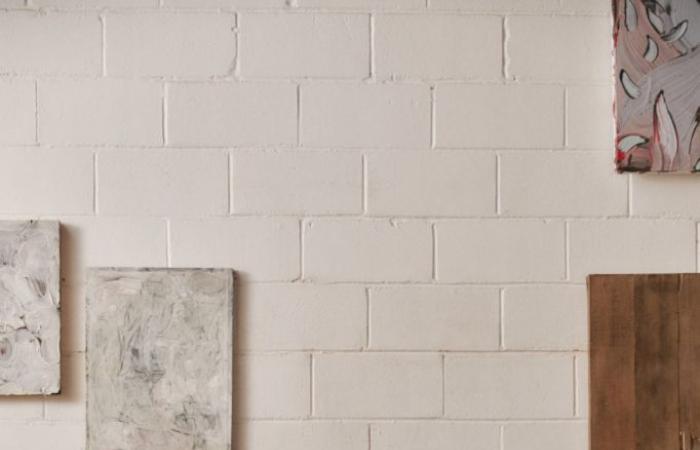
Photo : Adel Slimane Fecih
Photo : Adel Slimane Fecih
It seems a long time ago when the Ruinart house invested in 4, rue des Crayères, in Reims. Located on the heights of the city, this immense property was acquired by the Ruinart family in the 19th century, in order to build the buildings necessary for the development of its champagne business. It must be said that the site has an exceptional feature: galleries dug out of the chalk run through it on three levels, thus forming naturally refrigerated cellars which allow the vintages to be stored away from light. Fascinated by this heritage specific to the Ruinart house, the artist Henrique Oliveira was inspired by it to sign a monumental work which today sits in the main courtyard of this historic address.
This artistic carte blanche is part of the metamorphosis of the Ruinart headquarters. Led for three years by the Japanese architect Sou Fujimoto, the interior designer Gwenaël Nicolas and the landscape architect Christophe Gautrand, it is inspired by the philosophy of the House: to develop wines by taking the time to observe the nature, to listen to it and understand it. This exceptional renovation, just unveiled, reveals a centerpiece: a curvaceous contemporary pavilion, surrounded by historic 19th century buildings. Inspired by the evanescence of champagne bubbles, it is built in cut stone and has an entirely glazed wall opening onto the main courtyard. It is precisely opposite this minimalist building that stands the work of Henrique Oliveira, one of the six artists to whom the Champagne House asked to imagine exclusive pieces. With its immense wooded park, the exteriors of 4, rue des Crayères are designed as an artistic experience in their own right. By soliciting artists who integrate ecology and the environment into their approach, Ruinart aims to create bridges between nature and culture, architecture and living things.
Henrique Oliveira has created an impressive sculpture whose shape at first glance evokes a gigantic vine. The branches are intertwined like a labyrinth of roots, recalling the underground network of chalk pits. “I was very inspired by the process of making champagne, he confides. Like a vine with an inverted plant structure, my sculpture evokes roots which, instead of ending in narrower branches, blend together. It is an evocation of the cycle of wine making which begins again every year.” In addition to a metal structure and papier-mâché, the Brazilian artist used his signature material, reclaimed plywood called siding in Portuguese. Particularly popular in Brazilian cities, notably São Paulo, the siding evokes the construction site fences used in these metropolises and the precarious materials of the favelas, while emphasizing the need for reasoned use of natural resources. “What initially interested me with this material was its pictorial dimension, remembers Henrique Oliveira. I saw a parallel between the layers of plywood that decompose when the wood rots and thus reveal its structure, and the layers that you obtain with a paintbrush. There were porous textures on this wood, tool marks and those left by time.” Sensitive to questions of sustainable development, the artist creates pieces evoking a powerful nature free from any human intervention. “This conversation is a more meditative way of looking at nature, he confides. No doubt the living will not respond to us, but this approach invites us to consider it differently.”





